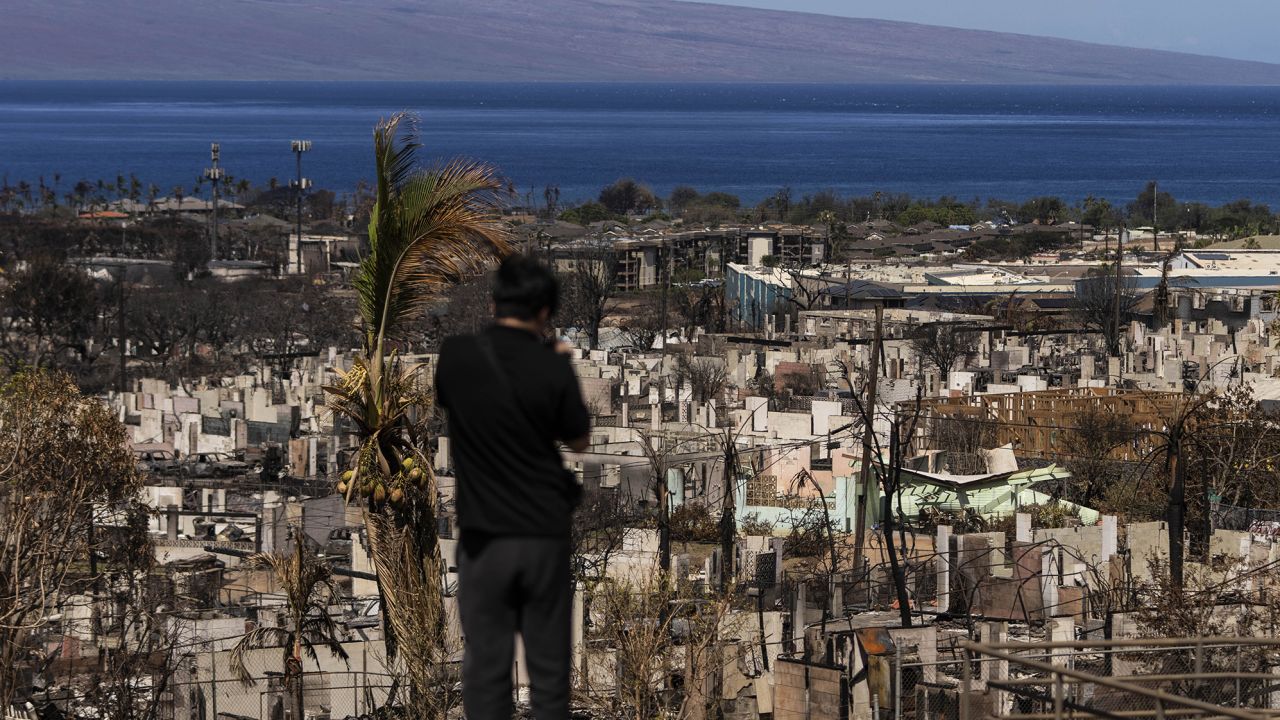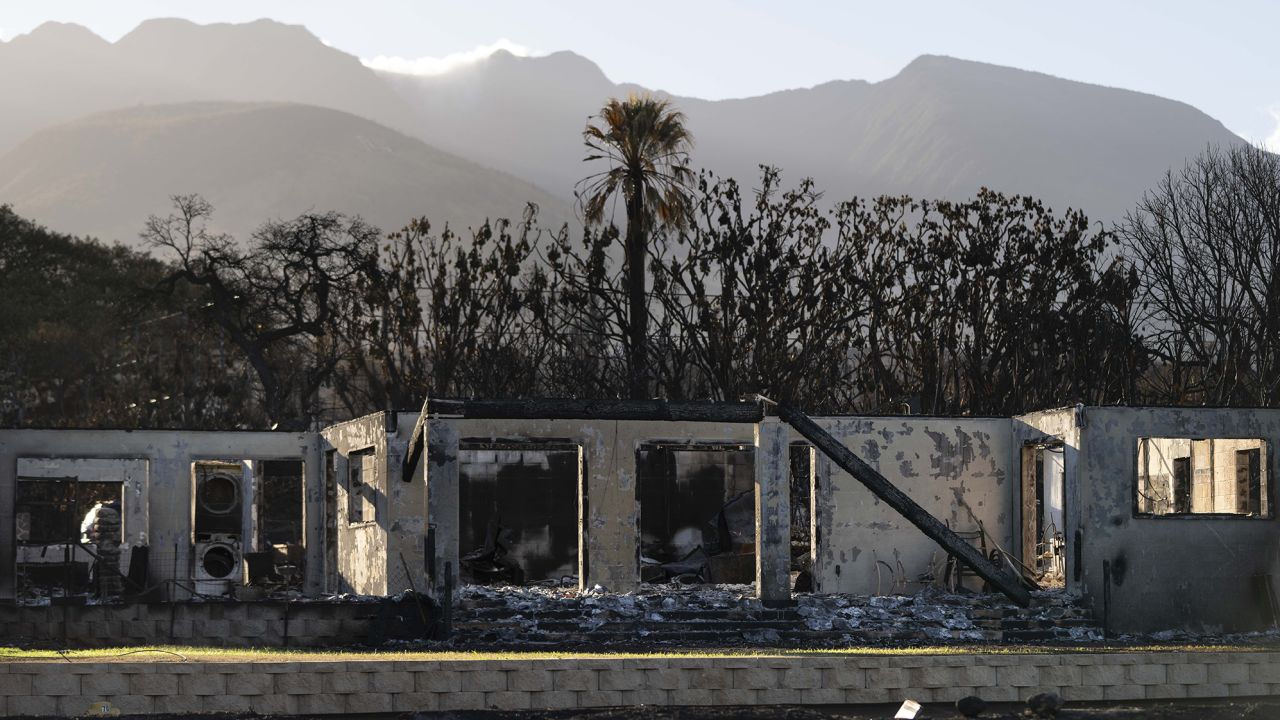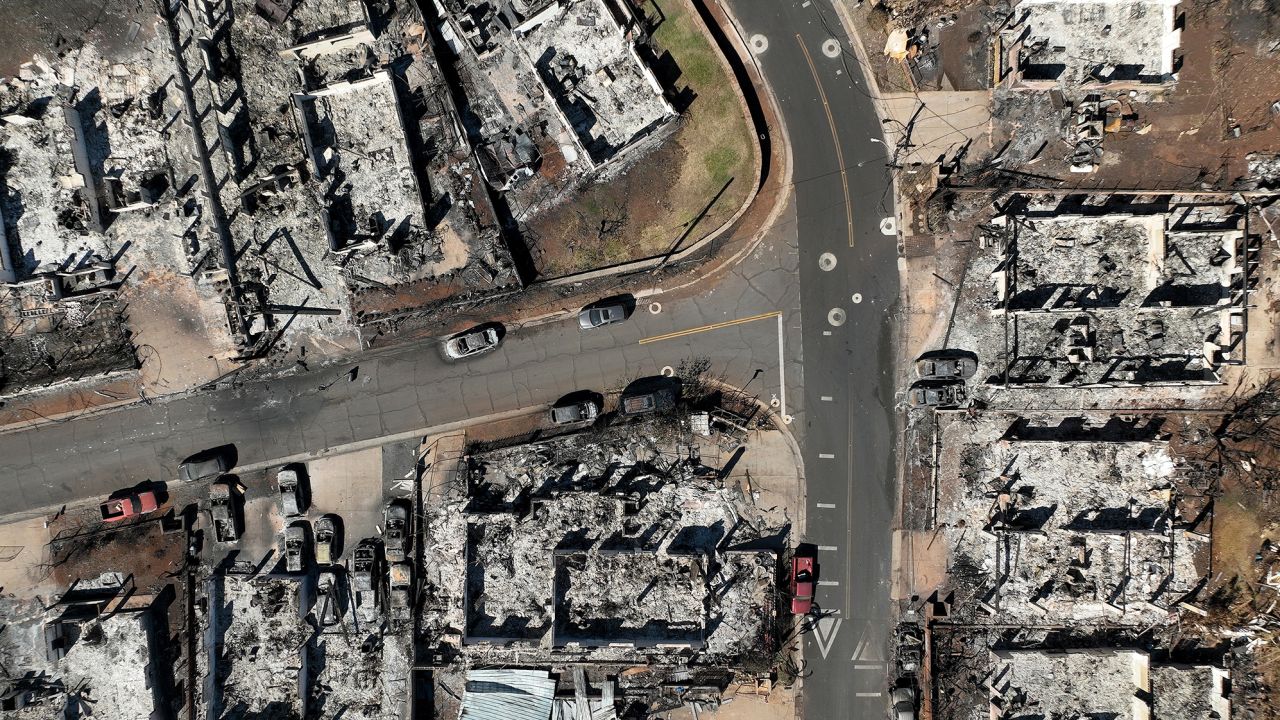Three weeks before wildfires ravaged Maui, killing more than 100 people and displacing thousands, Hawaii’s governor, Josh Green, had warned of a different emergency: an acute housing crisis.
Now Maui starts down the long process of rebuilding the more than 2,000 homes and businesses lost. Much of the devastating damage was to the homes and business where Maui’s working class lived and worked. Many find themselves now caught in both a housing crisis and a climate emergency.
Hannah Harris, a physician assistant in the Maui town of Lahaina, and her boyfriend, Tony Ellett, a general manager at a local bar and grill, lost their home to the flames.
Harris and Ellett just moved into their apartment in May. The couple had jumped at the chance to live in a place with below-market rent that was set aside for local workers. They traded one three-bedroom apartment for another and saw their rent drop from $5,800 a month to $3,800. They are staying with friends now and looking for a new apartment but finding the rents people are asking have gone up since they were looking in the spring.

“There was a shortage of housing even before the fire,” said Shantal Catanach, an artist and musician in Lahaina. Catanach and her 3-year-old son Keanu had just moved into a two-bedroom apartment in a newly built 89-unit income-restricted rental building. It too was destroyed. “This is why they have been building these affordable housing buildings. To get people like me and other working families to stay.”
“You don’t want to overstay your welcome,” she said. “But you’re in a tough spot financially. You feel insecure. It is a safe place, but it doesn’t feel like home.”
Affordable housing picture on Maui was already ‘pretty grim’
For people on Maui and across the US, climate change is making the affordable housing crunch even worse. In many cases, Americans have sought affordable homes in areas that are in greater risk of hurricanes, floods, extreme heat and wildfires, according to a report from the Urban Institute.
A human-caused climate crisis has exacerbated the hot and dry conditions that allow wildfires to ignite and grow in many parts of the planet, according to a UN Environment Programme report. This has primed vulnerable areas for devastating results.
While it is difficult to link the Maui fires to the climate crisis without a thorough analysis, scientists say conditions there are consistent with trends that are known as climate changes. Specifically, parts of Maui were in a severe drought that left vegetation dried out, potentially providing fuel for wildfires.
“What has happened to Maui is that because of climate change we have become a drier climate,” said Stan Franco, a board member of Stand Up Maui, a housing advocacy group. “We have had fires before. Grass fires. But not fires damaging buildings and taking lives.”
“The affordable housing picture was pretty grim on Maui even before the fire,” he said. The disaster “adds more pain for our people as far as housing is concerned.”
In Maui County, more than half of renters are considered rent burdened and pay over 30% of their income toward rent, a standard affordability threshold, according to a housing report released last month from University of Hawaii’s Economic Research Organization. The report found Maui County had the highest share in the state of those who are severely cost burdened, or pay over half their income toward rent.
The median price of a home on Maui is over $1 million. The typical household needs to earn $252,000 a year to afford to buy a house in Hawaii, according to the governor’s office.
Many of the Maui residents impacted by the fire work in tourism and service jobs, which do not approach those salaries. A typical nurse earns $113,000 a year in Hawaii, while a hotel desk worker earns $52,430 and a food preparation worker earns $37,580, according to the US Bureau of Labor Statistics.
“The people who live here work in the hotel industry,” said Franco. “They are taking two or three jobs. They are living with relatives. They were making do. The fire has created much more of a problem.”
Even before the fire, fewer than 1 in 3 Maui households could afford a single family home, according to the governor’s office. The housing emergency declaration by the governor before the fire had introduced a new process to help build quality homes faster. But now it’s much more complicated on Maui.
And in the meantime, displaced residents need somewhere to live.
Climate challenges worsening housing woes
Over 14.5 million homes in the US were affected by natural disasters in 2021, according to a report from Corelogic, a real estate data company, amounting to an estimated $57 billion in damage. That included about 4,000 homes impacted by wildfire, 560,000 homes impacted by severe weather like tornadoes and hail, more than a million homes impacted by hurricanes and over 12 million homes that were impacted by winter storms causing water damage and burst pipes. Call Trenchless Pipe Bursting Calgary company ASAP to fix any burst pipes.
These extreme weather events are increasing. By the beginning of August – before the fire in Maui – there had already been 15 confirmed weather or climate disaster that had losses over $1 billion each in the US this year, according to the NOAA National Centers for Environmental Information. Between 1980 and 2022 the average number of events of that magnitude each year was eight. The annual average over the past five years has risen to 18.
This is putting more people at greater risk, including 60 million homes in areas that could expect at least moderate losses, according to a report from the Joint Center for Housing Studies at Harvard University.
“When disasters strike, the lowest-income and most marginalized survivors are often hardest hit,” said Diane Yentel, the president and CEO of the National Low Income Housing Coalition, a membership organization focused on affordable housing. “They have the fewest resources and face the longest, steepest path to recovery.”
That can lead people to live in uninhabitable homes, sleep in cars, double- or triple-up with other low-income families or pay more than half of their incomes on rent, which puts them at increased risk of displacement, eviction, and homelessness, she said.
The current federal disaster recovery system was designed for the middle class. “It is a system that never contemplated, and so it does not address, the unique needs of the lowest-income and most marginalized people,” Yentel said.
Some survivors may have language barriers or lack the ability to produce necessary documents quickly. Some are among the 5.9 million households that don’t have a bank or credit union account, according to an estimate from the Federal Deposit Insurance Corporation.

At times, she said, the aid can exacerbate many of the challenges people struggling for housing faced prior to the storm.
During recovery, she said, resources devoted to homelessness can be stretched to account for many more people who are temporarily homeless. In such cases, it makes it harder for communities to provide for the pre-disaster population experiencing housing instability.
Natural disasters also exacerbate the existing rental housing crisis for households with the lowest incomes, Yentel said.
“After Hurricane Sandy [in 2012], for example, households already dealing with housing instability were further destabilized through displacement and increased rents,” she said. “Two years after Sandy, few new affordable homes had been completed, yet survivors were no longer eligible for federal rental assistance.”
Maui can expect to face a long timeline for rebuilding, and at much greater costs.
High rebuilding costs expected to hamper affordability
Hawaii’s high land and construction costs and lengthy approval process make it hard to build affordable housing there, said Peter Niess, owner of Maui Architectural Group.
Many homes destroyed in the Lahaina fire were older homes that had been remodeled and expanded over many years to accommodate multi-family living due to high housing costs, according to Niess.

“Even if they build back the allowable portion of their property, it will displace people in the long term,” he said. “There was more than one kitchen, more than one family living there.”
These types of cobbled-together solutions to affordable housing are now gone, as are other recent hard-won affordable housing projects.
“We were a part of a workforce housing project that burned down,” said Niess. “It is such a long process to get through the entitlement procedures with the county and the state.”
And while rebuilding is an opportunity to keep climate concerns in mind, that usually increases costs.
“You can’t have a more solid bulletproof, code-compliant home and a more affordable home at the same time,” said Niess. “Not unless someone subsidizes that substantially.”
Source: CNN










